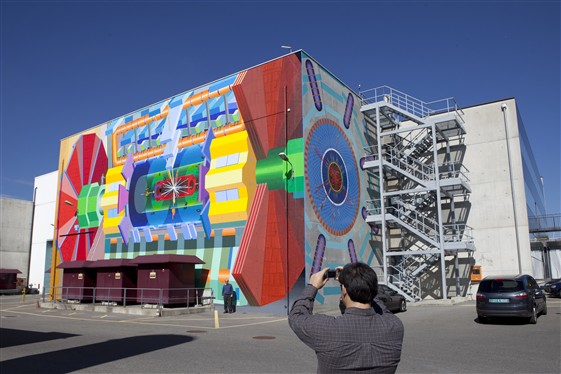The ATLAS collaboration at CERN unveils giant mural
 |
| the mural (Picture/CERN) |
This is not the first depiction Kristofoletti has made of the ATLAS detector: it has a smaller relative that he painted for the Redux Contemporary Art festival in South Carolina. That was spotted by members of the collaboration, and resulted in the artist being invited to visit the real thing.
"We were thrilled to learn that ATLAS and particle physics had found their way into popular art," said ATLAS physicist and outreach coordinator, Michael Barnett of the Lawrence Berkeley National Laboratory. "And it was a natural next step to bring that art to CERN."
Inspired by the human creativity that goes into research at the frontier of knowledge, Kristofoletti was happy to accept the commission. "You just look at certain things and think, 'wow, how are human beings able to do something so huge?'" he explained. "And that's certainly the feeling I got from ATLAS. How is it really possible? It's like a miracle that people are able to assemble something so complex."
Kristofoletti explained what it is about the project that attracted him to particle physics. "What got me painting murals was working in Italy for a couple of years and seeing the frescos of the Renaissance," he explained. "The subject of most of those works is religious mythology. When I think about the LHC, it always seems like an unprecedented cathedral of science. I think this will be a modern-day version of a Renaissance fresco. People enjoy having something that touches on both art and science. Humans have always tried to find out where we came from and where things originate, and I think that's why this captures people's imagination."
CERN and the LHC have attracted considerable interest from the artistic community over recent years, and the laboratory has responded by starting to develop an artist in residence programme.
Source: CERN Website